Grow bigger, sweeter melons? Absolutely! Imagine biting into a juicy, perfectly ripe melon that you nurtured from seed to fruit, right in your own backyard. It’s not just a dream; it’s an achievable reality with a few clever home gardening tricks and DIY hacks. For centuries, cultivating melons has been a cherished practice, dating back to ancient civilizations who prized them for their refreshing taste and nutritional value. From the watermelons depicted in Egyptian tombs to the cantaloupes enjoyed in Roman gardens, melons have always held a special place in our diets and cultures.
But let’s face it, sometimes our homegrown melons fall a little short – maybe they’re smaller than expected, or perhaps they lack that intense sweetness we crave. That’s where these DIY tricks come in! I’m going to share some simple, yet effective, techniques that will help you grow bigger, sweeter melons than you ever thought possible. Whether you’re a seasoned gardener or just starting out, these tips will empower you to maximize your melon harvest and impress your friends and family with your gardening prowess. Get ready to unlock the secrets to melon-growing success!
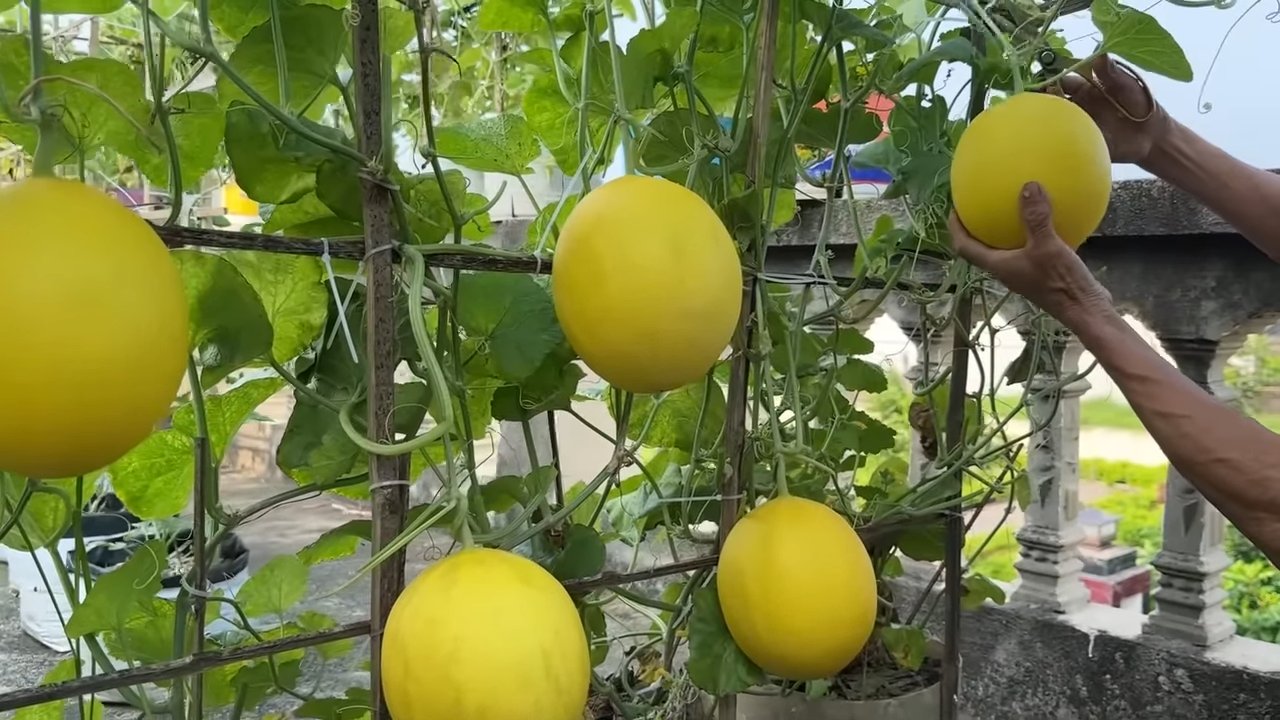
DIY: Supercharge Your Melons for Maximum Sweetness and Size!
Okay, melon lovers, let’s talk about getting those prize-winning, juicy, and unbelievably sweet melons you’ve always dreamed of. I’m going to share my tried-and-true methods for boosting your melon game. It’s all about understanding what these thirsty plants need and giving them a little extra TLC. Get ready for some serious melon magic!
Understanding Melon Needs: The Foundation for Success
Before we dive into the nitty-gritty, let’s quickly cover the basics. Melons are sun-worshippers, nutrient-hungry, and water-loving plants. They need:
* Full Sun: At least 6-8 hours of direct sunlight per day. This is non-negotiable!
* Well-Draining Soil: Melons hate soggy feet. Amend your soil with compost and other organic matter to improve drainage.
* Rich Soil: They’re heavy feeders, so a nutrient-rich soil is essential.
* Consistent Watering: Especially during fruit development.
* Warm Temperatures: Melons thrive in warm weather.
Phase 1: Soil Preparation – Setting the Stage for Melon Greatness
This is where the magic begins! A healthy start is crucial for a bountiful harvest.
1. Choose Your Location Wisely: Select a spot in your garden that gets at least 6-8 hours of direct sunlight. Make sure it’s also sheltered from strong winds, which can damage the vines.
2. Test Your Soil: A soil test will tell you the pH and nutrient levels of your soil. Melons prefer a slightly acidic to neutral pH (around 6.0-7.0). You can get a soil test kit at most garden centers or send a sample to your local agricultural extension office.
3. Amend, Amend, Amend!: This is the most important step! Melons are heavy feeders, so you need to enrich your soil with plenty of organic matter. I like to use a combination of:
* Compost: This adds nutrients and improves soil structure.
* Well-rotted Manure: Provides essential nutrients like nitrogen, phosphorus, and potassium. Make sure it’s well-rotted to avoid burning the roots.
* Bone Meal: A great source of phosphorus, which is essential for root development and flowering.
* Greensand: Provides potassium and trace minerals.
* Aged Chicken Manure: This is a great source of nitrogen, but be careful not to overdo it, as too much nitrogen can lead to excessive vine growth and fewer fruits.
Work these amendments into the top 12-18 inches of soil. I usually use a garden fork or tiller to thoroughly mix everything together.
4. Create Raised Beds (Optional): Raised beds improve drainage and warm up the soil faster in the spring. This is especially helpful if you have heavy clay soil.
5. Consider Soil Solarization: If you have a history of soilborne diseases or pests, consider solarizing your soil before planting. This involves covering the soil with clear plastic for several weeks during the hottest part of the summer. The heat will kill off many harmful organisms.
Phase 2: Planting and Early Care – Nurturing Your Melon Seedlings
Now that your soil is prepped, it’s time to get those melon seeds or seedlings in the ground!
1. Start Seeds Indoors (Optional): Starting seeds indoors gives you a head start on the growing season, especially in cooler climates. Sow seeds 3-4 weeks before the last expected frost. Use peat pots or biodegradable pots to avoid disturbing the roots when transplanting.
2. Direct Sow Seeds: If you live in a warm climate, you can direct sow seeds directly into the garden after the last frost. Plant seeds about 1 inch deep and 2-3 feet apart.
3. Transplant Seedlings: If you started seeds indoors, harden them off for a week before transplanting them into the garden. This involves gradually exposing them to outdoor conditions. Transplant seedlings on a cloudy day to minimize stress. Space them 2-3 feet apart.
4. Water Thoroughly: After planting, water the seedlings or seeds thoroughly. Keep the soil consistently moist, but not soggy.
5. Mulch: Apply a layer of mulch around the plants to help retain moisture, suppress weeds, and regulate soil temperature. I like to use straw, hay, or wood chips.
6. Protect from Pests: Young melon plants are vulnerable to pests like cucumber beetles and squash bugs. Cover them with row covers to protect them until they start to flower.
7. Fertilize Regularly: Once the plants start to grow, fertilize them every 2-3 weeks with a balanced fertilizer. I like to use a liquid fertilizer diluted to half strength.
Phase 3: Maximizing Fruit Size and Sweetness – The Secret Sauce
This is where we really focus on getting those melons to their full potential!
1. Water Deeply and Consistently: Melons need plenty of water, especially during fruit development. Water deeply and regularly, aiming for about 1-2 inches of water per week. Avoid overhead watering, as this can lead to fungal diseases. Drip irrigation is ideal.
2. Prune the Vines (Selectively): While it might seem counterintuitive, pruning can actually help increase fruit size and sweetness. Remove any unproductive vines or suckers (small shoots that grow from the base of the plant). This will redirect the plant’s energy to the developing fruits. I usually prune after the plant has set a few fruits.
3. Hand Pollination (If Necessary): If you’re not seeing a lot of bees in your garden, you may need to hand-pollinate the flowers. This is easy to do. Simply use a small paintbrush to transfer pollen from the male flowers to the female flowers. Female flowers have a small fruit behind them, while male flowers do not.
4. Fertilize with Potassium: Potassium is essential for fruit development and sweetness. Once the fruits start to develop, switch to a fertilizer that is higher in potassium. You can also add potassium-rich amendments like wood ash or banana peels to the soil.
5. Sugar Boost (My Secret Weapon!): This is a trick I learned from an old-timer, and it really works! Dissolve 1 tablespoon of Epsom salts and 1 tablespoon of sugar in 1 gallon of water. Water each plant with this solution every 2 weeks. The Epsom salts provide magnesium, which helps the plant absorb nutrients, and the sugar provides a quick energy boost.
6. Sun Protection: As the melons grow, they can sometimes get sunburned, especially in hot climates. Protect them from the sun by covering them with shade cloth or straw.
7. Elevate the Melons: Place the melons on a piece of wood, brick, or plastic to prevent them from sitting directly on the soil. This will improve air circulation and reduce the risk of rot.
8. Reduce Watering Before Harvest: About a week before you expect to harvest the melons, reduce watering. This will concentrate the sugars and improve the flavor.
Phase 4: Harvesting and Enjoying Your Bountiful Crop
The moment you’ve been waiting for! Knowing when to harvest is key to getting the sweetest, juiciest melons.
1. Check the Tendril: The tendril closest to the melon stem will start to dry out and turn brown when the melon is ripe.
2. Thump Test: Give the melon a gentle thump. A ripe melon will sound hollow.
3. Ground Spot: The spot where the melon rests on the ground will turn from white to yellow or cream-colored.
4. Aroma: A ripe melon will have a sweet, fragrant aroma.
5. Stem Separation: The stem will start to separate easily from the vine when the melon is ripe.
6. Harvest Carefully: Use a sharp knife to cut the melon from the vine, leaving a few inches of stem attached.
7. Chill and Enjoy!: Chill the melon in the refrigerator for a few hours before enjoying.
Troubleshooting Common Melon Problems
Even with the best care, you may encounter some problems along the way. Here are a few common issues and how to deal with them:
* Powdery Mildew: This fungal disease causes a white, powdery coating on the leaves. Prevent it by providing good air circulation and avoiding overhead watering. Treat it with a fungicide if necessary.
* Cucumber Beetles: These pests can damage young plants and spread diseases. Control them with row covers, insecticidal soap, or neem oil.
* Squash Bugs: These pests suck the sap from the leaves and can kill young plants. Handpick them off the plants or use insecticidal soap.
* Blossom End Rot: This is caused by a calcium deficiency and results in a dark, sunken spot on the bottom of the fruit. Prevent it by adding calcium
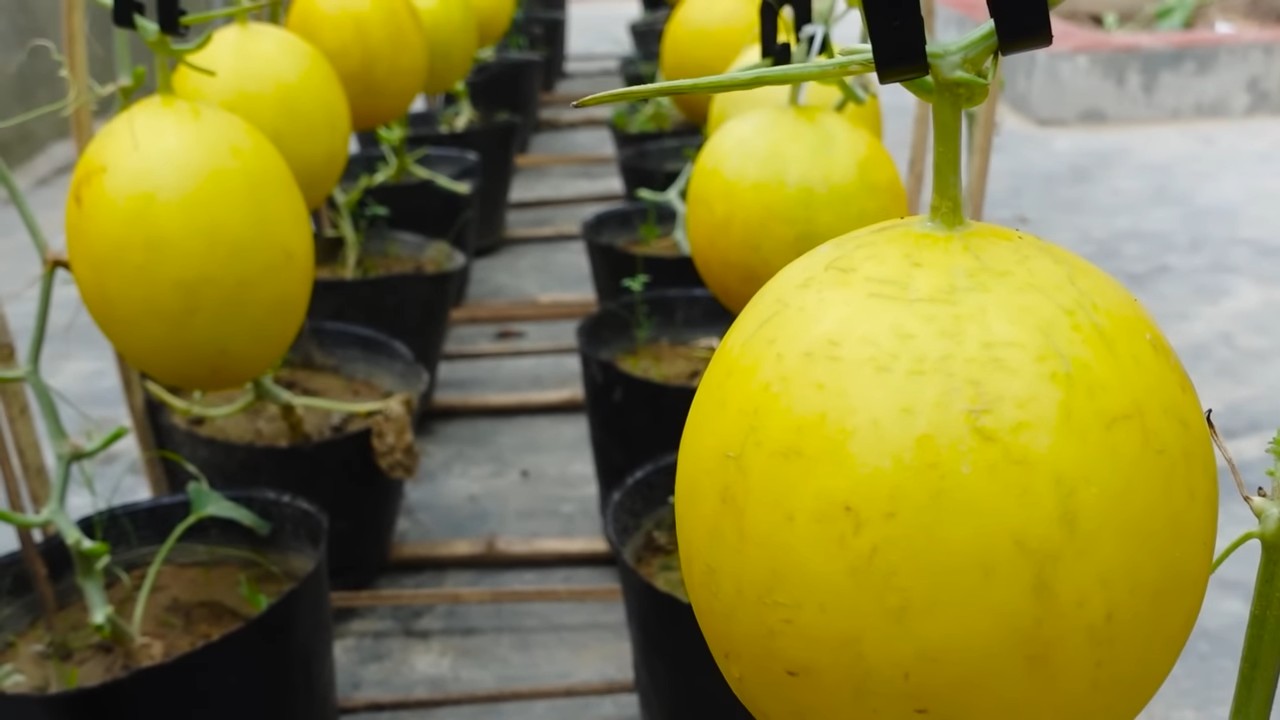
Conclusion
So, there you have it! This simple, yet incredibly effective DIY trick for growing bigger, sweeter melons is a game-changer for any home gardener. We’ve walked you through the process, highlighting the science behind why it works and providing practical tips to ensure your success. But why is this method a must-try?
Firstly, the results speak for themselves. Imagine biting into a juicy, intensely flavorful melon that you nurtured to perfection. This isn’t just about size; it’s about unlocking the full potential of your melon plants, maximizing their sweetness and overall quality. You’ll be amazed at the difference this targeted approach makes compared to simply letting nature take its course.
Secondly, this DIY trick is incredibly accessible. You don’t need expensive equipment or specialized knowledge. With a few readily available materials and a little bit of your time, you can significantly enhance your melon harvest. It’s a cost-effective way to elevate your gardening game and enjoy the fruits (or rather, melons!) of your labor.
Thirdly, it’s about control. You’re actively participating in the growth process, providing your melon plants with the specific support they need to thrive. This hands-on approach not only yields better results but also fosters a deeper connection with your garden and the food you grow.
Variations and Suggestions:
Don’t be afraid to experiment! While the core technique remains the same, you can adapt it to suit your specific needs and preferences.
* Soil Amendments: Consider incorporating additional soil amendments like bone meal or Epsom salts to further boost nutrient availability. These can provide essential phosphorus and magnesium, respectively, which are crucial for fruit development.
* Watering Techniques: Consistent and deep watering is essential, especially during fruit development. Consider using a soaker hose to deliver water directly to the roots, minimizing water loss through evaporation.
* Support Systems: For larger melon varieties, provide additional support to the vines to prevent them from breaking under the weight of the fruit. Trellises or slings can be used to support the melons as they grow.
* Companion Planting: Explore companion planting options to deter pests and attract beneficial insects. Marigolds, for example, are known to repel nematodes, while basil can help deter aphids.
* Grafting: For advanced gardeners, consider grafting your melon plants onto more vigorous rootstocks. This can improve disease resistance and overall plant health.
We are confident that this DIY trick will transform your melon-growing experience. It’s a simple, effective, and rewarding way to achieve bigger, sweeter melons that will impress your family and friends.
Now, it’s your turn! We encourage you to try this DIY trick in your own garden and share your results with us. We’d love to hear about your successes, challenges, and any variations you’ve tried. Share your photos and stories on social media using [Your Hashtag] and let’s inspire other gardeners to unlock the full potential of their melon plants. Happy gardening!
Frequently Asked Questions (FAQ)
What type of melons does this DIY trick work best for?
This trick is effective for a wide variety of melons, including watermelon, cantaloupe, honeydew, and muskmelon. The underlying principle of focusing the plant’s energy on fewer fruits applies to all melon varieties. However, the specific results may vary depending on the variety, climate, and overall growing conditions. For example, larger watermelon varieties may benefit more from this technique than smaller personal-sized melons.
How often should I apply this technique during the growing season?
This technique is typically applied once, when the melons are about the size of a tennis ball. This is the critical stage when the plant is deciding where to allocate its resources. Removing excess melons at this point allows the plant to focus its energy on the remaining fruits, resulting in larger and sweeter melons. Applying the technique too early may result in the plant producing more melons, negating the desired effect. Applying it too late may not allow enough time for the remaining melons to fully develop.
What if I accidentally remove too many melons?
While it’s important to be selective, don’t panic if you accidentally remove too many melons. The plant will likely continue to produce new flowers and fruits, although they may not reach the same size as the ones that were allowed to develop from the beginning. Monitor the plant closely and adjust your watering and fertilization accordingly to support new fruit development.
Will this technique affect the taste of the melons?
Yes, this technique is specifically designed to improve the taste of the melons. By focusing the plant’s energy on fewer fruits, you’re allowing it to deliver more nutrients and sugars to each melon. This results in a sweeter, more flavorful melon with a richer aroma. The difference in taste can be quite noticeable, especially when compared to melons grown without this technique.
Can I use this technique in conjunction with other gardening practices?
Absolutely! This technique is most effective when combined with other good gardening practices, such as proper soil preparation, regular watering, and adequate fertilization. Ensure that your melon plants are receiving the nutrients they need to thrive. Soil testing can help determine any nutrient deficiencies and guide your fertilization strategy. Mulching can also help retain moisture and suppress weeds, creating a more favorable growing environment.
Is this technique suitable for container gardening?
Yes, this technique can be adapted for container gardening. However, it’s important to choose a container that is large enough to accommodate the mature size of the melon plant. Also, ensure that the container has adequate drainage to prevent waterlogging. Container-grown melons may require more frequent watering and fertilization than those grown in the ground.
How do I know which melons to remove?
When selecting which melons to remove, prioritize those that are damaged, misshapen, or located in shaded areas. These melons are less likely to develop into high-quality fruits. Also, consider the overall spacing of the melons on the vine. Aim to leave the most vigorous and well-positioned melons to maximize their growth potential.
What do I do with the melons I remove?
The melons you remove may not be fully ripe, but they can still be used in various ways. Smaller, immature melons can be pickled or used in stir-fries. Larger, slightly more mature melons can be used to make chutneys or relishes. Alternatively, you can compost the melons to enrich your garden soil.
Does this DIY trick work for all climates?
This technique is generally effective in most climates where melons can be grown successfully. However, the specific timing and results may vary depending on the climate. In cooler climates, it may be necessary to start the melon plants indoors to extend the growing season. In hotter climates, providing shade during the hottest part of the day can help prevent sunburn and stress on the plants.
How long does it take to see results from this technique?
You should start to see noticeable results within a few weeks of applying this technique. The remaining melons will begin to grow more rapidly and develop a deeper color. The sweetness of the melons will also increase as they ripen. The exact timing will depend on the variety of melon and the overall growing conditions.

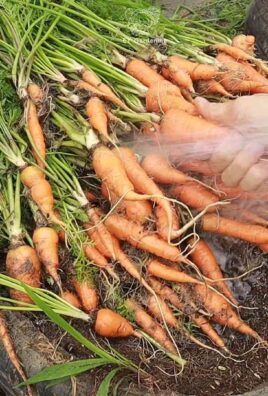
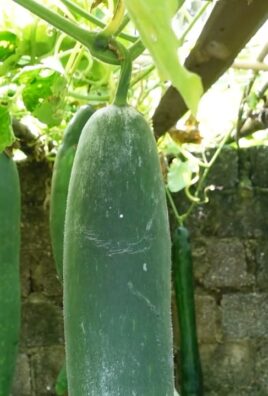
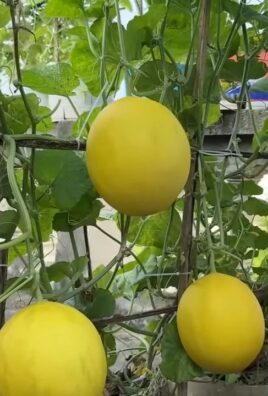
Leave a Comment